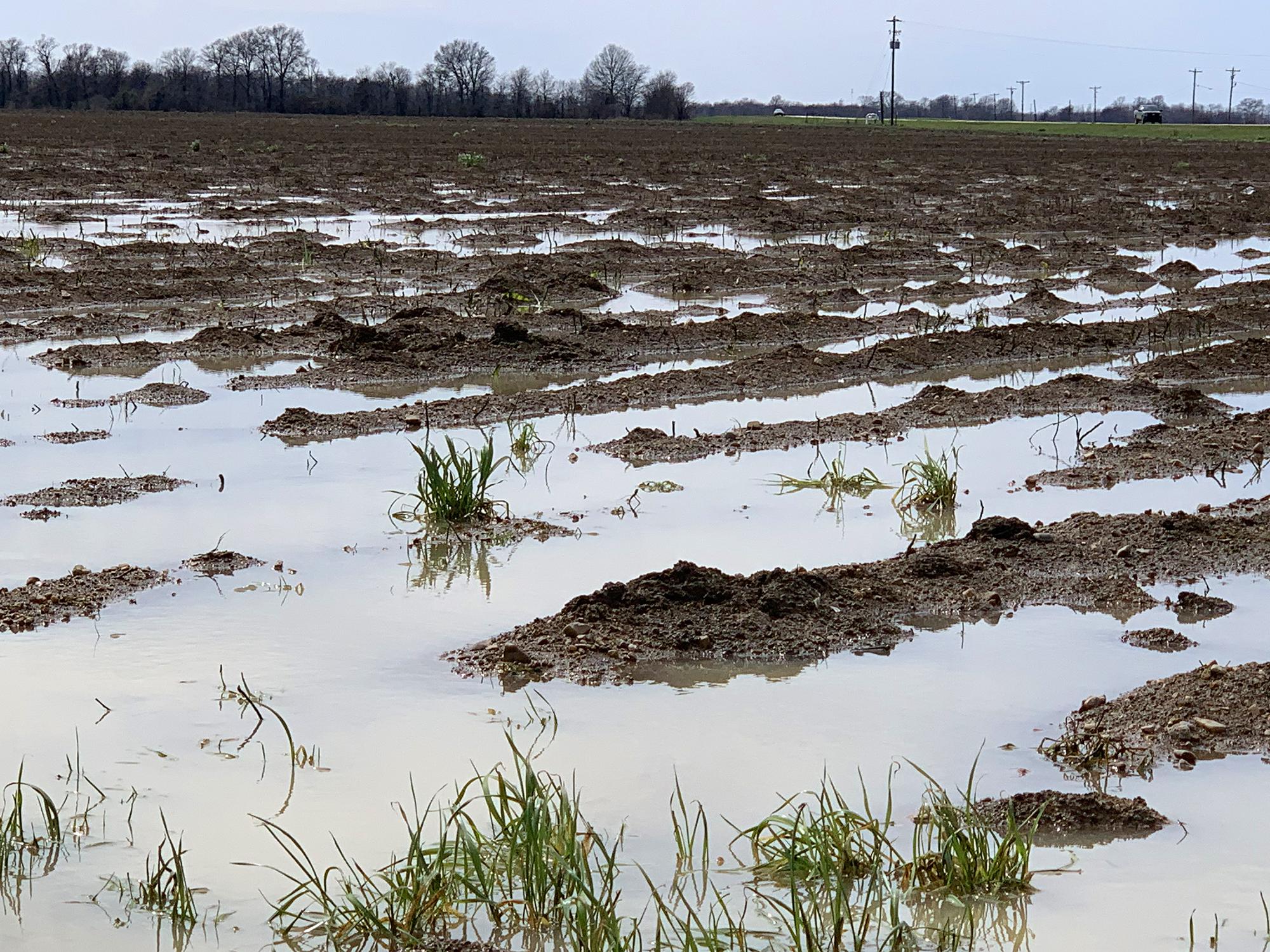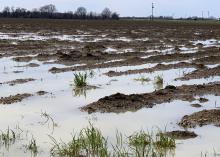Information Possibly Outdated
The information presented on this page was originally released on March 15, 2019. It may not be outdated, but please search our site for more current information. If you plan to quote or reference this information in a publication, please check with the Extension specialist or author before proceeding.
Wet conditions may delay planting efforts
STARKVILLE, Miss. -- Recent rainfall in north Mississippi has flooded many areas and made much Delta farmland unworkable as the time approaches for planting and other traditional tasks.
Mike Brown, state climatologist and Mississippi State University professor, said the area around Interstate 20 has had normal rainfall since January, while areas farther south have been slightly below normal.
“The greatest amount of rain fell on the northern one-third of the state,” Brown said. “From Jan. 1 to March 12, Tupelo had 22.84 inches of rain, the wettest on record; Starkville had 20.03 inches, the fifth wettest on record; and Greenwood had 17.53 inches, the sixth wettest on record.”
Larry Oldham, soil specialist with the MSU Extension Service, said using heavy equipment too soon after it has flooded can compact soil below the surface.
“This creates a zone that is resistant to root growth and water infiltration, and that decreases the ability of your crop to thrive, as it limits the plants’ access to nutrients and water,” Oldham said.
In addition to the Mississippi River, several important rivers drain the Delta. Frequent, heavy rains are raising river levels across the state. Standing water is found in large areas around the Sunflower and Yazoo rivers and farther north in the Friars Point area.
John Mark Looney of Tribbett said his farmland in Washington County is not flooded, but it is saturated.
“If the sun came out and we had temperatures of 65 to 70 degrees, we could get out in the field to plant in a week to 10 days,” Looney said. “It will probably be the first of April before we plant anything this year.”
Corn is typically the first row crop planted in Mississippi each year, with some fields being planted as early as mid-March. Erick Larson, Extension corn specialist, said it is too early to know what impact recent wet weather will have on the crop.
“We are in a precarious situation entering planting season,” Larson said. “We had a wet fall and late harvest last year, and many of the fields were rutted up when they were harvested. With rain through the fall and winter, many producers did not have a chance to perform any tillage to repair or prepare fields for spring planting.”
Larson said this situation makes crop planting progress more dependent than normal on an extended period of sunny, dry weather to dry soils this spring.
When rivers flood onto farmland, they often wash in debris that is left after waters recede. Flooded river bottoms displace wildlife such as deer, snakes and alligators, and the water itself often carries contaminants such as pesticides, other chemicals and waste from flooded septic systems.
Anne-Howard Hilbun-Benoit, Extension instructor, urged caution when entering flooded areas.
“Stepping into flood waters or trying to drive through it is a bad idea since you don’t know how high the water is or how swiftly the water is moving under the surface,” Hilbun-Benoit said. “It only takes a few inches of water to sweep away a vehicle. The best practice is to wait until the waters recede and follow the directions of local authorities.”
The Extension Service has a variety of information and publications of flood-related topics. For information, search flood-related terms at http://extension.msstate.edu/.




